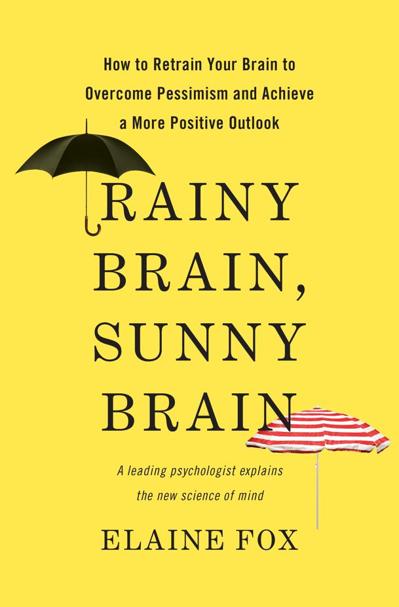
By Deborah Kotz, Globe Staff
Former British prime minister Winston Churchill once described success as the “ability to go from failure to failure without losing your enthusiasm.” He might have been more than a little prescient because researchers have since found that optimism plays a key role in achievement in life — as well as increasing our odds of living longer and healthier.
But where scientists once thought that having a sunny outlook, or a rainy one, was set in stone on the day we were conceived, the latest research suggests that genes play only a 30 percent to 40 percent role in our outlook and that, with a little training, our brains have the ability to shift over time from a more negative outlook to a more positive one.
A book published this week provides a roadmap for rewiring the brain and redefines what optimism is. “It’s not just positive thinking but for positive actions,” said Oxford University cognitive neuroscientist Elaine Fox, author of the book, Rainy Brain, Sunny Brain. Persistence is key: Rather than sitting and passively waiting for life to happen, optimistic people take steps to implement their goals.
A 2005 University of Kentucky study found that optimistic folks spent a minute longer trying to solve an unsolvable anagram word puzzle than those who were more pessimistic. “They literally don’t give up as easily and this links to greater success in life,” said Fox. “Optimists tend to think they can change things; they have a real sense of control, even if it’s illusory.”
Clearly, we need our darker side to pull us back from ultimately fruitless pursuits, but overall, we’re better off believing that we can surmount any challenge life throws our way. “Optimism needs to be tied to realism,” explained Fox, “understanding that things are going to go wrong but that you’ll be able to deal with them.”
If you’re not sure where you fall on the optimism/pessimism scale, take this life orientation test. If you already know that you see life as one bad roll of the dice after another, Fox said there are several things you can do to increase optimism. “Research is encouraging. We know that we can change how the brain circuits function to change a person’s outlook, but a person needs to put a lot of effort into it,” Fox said.
Someone with severe pessimism that causes anxiety disorder or clinical depression, for example, might need to see a professional for cognitive behavioral therapy to learn how to challenge and dispel negative thoughts that prevent positive action.
Those who have milder pessimistic tendencies can try the following to shift to a sunnier outlook.
1. Make a daily tally of negative and positive events. Create a list — starting from when you wake up in the morning — of all the little things that go right and all those things that go wrong, from burning the toast at breakfast to running into an old friend on the train to work. “People prone to feeling depressed and down tend to be surprised at how many good things happened to them that day,” said Fox. “Something as simple as making a list can help people gradually, over time, notice the good things when they happen, drawing the brain’s attention more and more to positive things and away from the negative.”
2. Aim for three positive experiences for every one negative one. Most optimists engage in three enjoyable activities for every one they wish they could avoid, whether it’s drinking their favorite brand of coffee, taking a yoga class, or watching a short clip online of their favorite movie just before they have to tackle that dreaded phone call to an irritated relative. The key is to build things into your day that you look forward to and to cut back on things, when possible, that you don’t.
3. Exercise every day. Getting some sort of physical activity every day works like a natural antidepressant to boost your mood, giving you a more positive feeling about life, thanks to an elevation of certain brain chemicals such as serotonin and BDNF. Yes, you should engage in activities that are pleasurable — take a dance class if you hate jogging — so you don’t violate step #2.
4. Engage in mindfulness meditation. Learning to be present in the moment can help build regions of the brain responsible for mediating your emotional states, research has shown. Those who practice mindfulness tend to feel happier and more at ease in life simply from focusing their brains on the present rather than mulling over the past or fretting about the future. Take a class or check out this video to learn the basic techniques.
Deborah Kotz can be reached at dkotz@globe.com. Follow her on Twitter @debkotz2.
